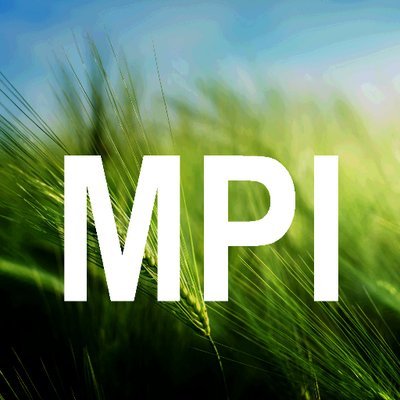Submission on an organic standard in New Zealand.
11 June 2018
Ministry for Primary Industries
PO Box 2526
Wellington 6140
Submission on MPI Discussion Paper N0: 2018/19
Background
1. The Soil & Health Association of New Zealand Inc. (“Soil & Health”) is a charitable society registered under the Incorporated Societies Act 1908. It is the largest membership organization supporting organic food and farming in New Zealand and is one of the oldest organic organisations in the world, established in 1941. Soil & Health’s objectives are to promote sustainable organic agricultural practices and the principles of good health based on sound nutrition and the maxim: “Healthy soil, healthy food, healthy people”. Its membership is chiefly composed of home gardeners and consumers, organic farmers and growers, secondary producers, retailers and restaurateurs. Soil & Health publishes the bi-monthly ‘Organic NZ’ magazine – New Zealand’s leading organics magazine.
Introduction
2. Soil & Health welcome the opportunity to comment on the MPI Discussion Paper “Would New Zealand benefit from new organic regulation?” (“Discussion Paper”). However, we are concerned that the consultation and submission period was both at short notice and for a relatively short time. Organisations throughout the sector will have had difficulty to have appropriate discussions among their members and members including both consumers and organic licensees. We reserve the right at Select Committee and further consultation to further refine our position.
- To know our food is safe, free from contamination and harmful residues is a fundamental human right. However, the right to know exactly what we are eating is often taken away and even routinely denied to us. While growing our own food remains the best way to ensure that we know what we are eating and how it is grown, we must also know what has been sprayed onto crops and soil, added to foods, and used in the processing of the food we purchase. There is a growing awareness in society of how food determines health and people are now demanding to know what is in their food and how it is grown. Safeguards to protect people and the environment are becoming more important and need greater attention as the presence of toxins in the environment become more common.
- Soil & Health is committed to advocating for transparent and honest food labelling in New Zealand. We believe that transparent food labelling is fundamental in allowing people to make informed choices. We believe that everyone has a right to safe and nutritious food that is grown in a way that enhances the environment. This covers the right to have food free from microbial contamination, harmful organisms, pesticides, harmful chemicals and heavy metal contaminants, harmful additives, irradiation and genetic engineering. We believe in the right of people to equip themselves with the knowledge to make informed food choices. This is only achievable through clear and transparent food labelling.
- Soil & Health as an organisation that advocates for organics, is a strong supporter of organic certification as it provides a verification system for consumers that ensures that the food product they are purchasing is produced according to specific organic standards. Consumers can trust food or other products that are labelled as certified organic, because they are subject to rigorous audits to ensure their safety and integrity. Most importantly it helps to ensure that businesses do not deceive or mislead consumers through false representation or false information when labelling themselves as organic. We consider certification important as it supports consumers in making informed choices about organic food.
- Currently there are several different organic certification agencies in New Zealand which all have their own standards and labels. Labels however can be confusing for consumers as there can be many different ones used on food products, for example, regulated and accredited ones like the Heart Foundation tick, or some companies creating labels such as ‘vegan’ or ‘100% natural’. As stated in the Executive Summary of the Discussion Paper, consumers have a mixed understanding about what these claims mean. People want clean, safe food, and are increasingly turning to organic foods and products. Many farmers and producers are responding to demand and producing high quality, certified organic products. But there are a few producers claiming their products are organic when in fact they are not. Some producers may be unintentionally misleading consumers; others may be deliberately using the word organic as part of their marketing strategy to sell more product and/or at a higher price. While consumers are protected by the Fair Trading Act 1986, which requires producers to be able to substantiate any claims that they are making on their products, the absence of a single definition in New Zealand of what organic means makes enforcement difficult. Furthermore, with no government oversight of organic standards, and no national standard to protect the word ‘organic’, the integrity of the organic industry as a whole is compromised.
- Soil & Health therefore strongly supports the proposal to introduce a mandatory National Organic Standard and associated regulatory regime for organic production. A fundamental point for Soil & Health in developing a single National Organic Standard is to reduce consumer confusion that is created when there are multiple certification agencies. Creating a single National Organic Standard for organics in New Zealand would help to reduce consumer confusion and boost consumer confidence in organic labelled food. It would also put us in step with nearly all of the top 25 organic exporting nations. This will give comfort not only in New Zealand but to export markets as well and will make exports easier.
- However, regulations which would follow adoption of a single National Organic Standard should not disadvantage small growers. While all relevant businesses should comply with the National Organic Standard there should be provision for a lesser burden of verification on smaller scale growers and producers where the cost would be disproportionate to the benefit. We therefore support exemptions that support smaller growers and produces who typically supply local markets and direct to their consumers. We recognise that among the myriad of reasons for supporting smaller producers is the fact that before big producers were big they generally were small, and we must support them in order to foster the growth of the organic industry. Effective exemptions must still require a claim of ‘organic’ to be meeting the National Organic Standard, and examples exist for on-line registration, or affidavits of compliance for operators below a certain monetary threshold.
Discussion Paper Questions
Part 1: Introduction, purpose and context
- Do you agree or disagree with the proposed scope? Are there any other products, for example aquaculture products, that should be considered? Please specify.
We generally agree with the proposed scope so long as this is recognised as merely a starting point. However, some aquaculture products, both salmon and mussels, have previously been certified organic in New Zealand, so it is important that aquaculture would be covered by regulation of organics to ensure inappropriate claims are not made.
The scope is currently limited to primary and processed products and we recognise this is a good place to start from as they form a large part of New Zealand’s organic production. However, as the development of the regulations progress other products might need to be included for example, it is also not clear whether cosmetics, body care products and textiles are included in the scope.
- To what extent do you agree with the description of the current context for organics? Please explain why.
We agree. The market information provided is consistent with reports produced by Organics Aotearoa New Zealand. However, the description lacks any information about or acknowledgement of New Zealand’s current GE-free status and the market advantages that this provides. The use of GE or GMOs is prohibited in organic products, and products cannot be labelled certified organic if they contain GMOs. The global Non-GMO market is at US$550 billion,[1] and trends show this is only going to grow.
Of New Zealand’s five key trading partners, three have non-GMO labelling regulations.[2] New Zealand has a market with these countries due to the perception and the fact that no GMO seeds are currently being cultivated in New Zealand. China is the largest trading partner with dairy being the largest single export. In 2014 NZ$5.3 billion of dairy products were exported to China.[3]
What is also important to mention is that organic and sustainable agriculture is the highest value added agricultural market with over US$80 billion worldwide sold as organic in 2014.[4] New Zealand primary industries are looking for ways to export value-added products as they move away from commodity-based trading. The collapse of the dairy industry in 2015 and the rise of tourism as the largest contributor to New Zealand’s GDP indicate an over-reliance on a narrow range of commodities. Federated Farmers sponsored a number of speakers during their national conference on 1-3 July 2015 in Wellington, who shared the view that value added agriculture is important to the resilience of the industry.
- To what extent do you agree with the description of the current regulatory environment for organics? Please explain why?
We agree with the description of the current regulatory environment for organics, namely that they are not regulated at all. One could conclude that MPI’s Official Organic Assurance Programme (“OOAP”) Technical Rules have by default become a national organic export standard. However, the OOAP Technical Rules is an export one and run through MPI with the Organic Export Association of New Zealand. While the process is consultative, it is hardly representative of the wider organic sector in New Zealand and is focused solely on exports.
It must also be noted that over decades the BioGro NZ standard has been run by its Society’s members and licensees who have contributed to its development through standards and certification committees. It has had significant voluntary input and provided a chance to review the impact of decisions on growers, input providers etc. Soil & Health also contributed to this largely as the consumer voice on all boards. However, this process of keeping the standard up to date is is exhausting on resources and the voluntary base.
- Do you agree that this is a good opportunity to change the way organics are currently regulated in New Zealand? In your opinion, what needs to change? Please explain why.
We agree that this is a good opportunity to change the way organics are regulated in New Zealand. The current unregulated environment undermines the credibility of certified organic products produced in New Zealand and this needs to change. Organic licensees, the retail sector and the public are confused and often have a poor understanding of what organic means, or the implications of false claims. Regulation should aim to protect consumers from fraudulent claims and protect producers from unfair competition (products with false claims), thereby building the credibility of organic products produced in New Zealand. There is also an opportunity to rationalise other activities like auditor training, and upskilling, technical development, certification management and to develop a common national mark.
- Do you think that the appropriate objectives for a new organic regime have been identified? What would you suggest a new regime should achieve? Please explain why.
We agree with the objectives outlined however question whether the regulatory regime needs to be flexible.
We consider that the new regime should endorse and protect the status of existing New Zealand certifiers. The regime should enable certifiers to set higher standards (above the regulation) should they want to. It should also allow for equivalency between New Zealand produced and certified imported organic products provided the certification standards are at least equivalent to the New Zealand regulation. Soil & Health strongly supports the Participatory Guarantee Systems such as OrganicFarmNZ to be recognised as a credible certification pathway.
Part 2: Options for how a new regime for organics could work
- Do you think that a standard setting out requirements for production methods would be best suited to organic production? Please explain why.
Yes, because organics also has environmental and sustainability outcomes, not just food safety outcomes. Production methods are important because of the benefits to the environment as well as end product qualities.
Issue 1: Should a new standard be voluntary?
- Do you think that the correct options have been identified? Are there alternative option(s) that should be considered? Please describe.
Yes, we agree that the correct options have been identified. We do not propose any other alternatives.
- Are there positive or negative impacts of any options that are not described? Please describe any impacts that we’ve missed.
Cost is a significant concern to all organic growers and producers but most especially to small-scale growers and producers suppling local markets direct to the consumers. Small-scale growers and producers are important for the support of fresh organic products to New Zealand consumers and therefore any new regulations which would follow adoption of a single standard must not penalise them through unnecessary compliance costs.
The importance of genuine organic consumers expectations needs to be considered in the structure of Standards setting/maintenance body, and stakeholders groups. The importance of the consumer guarantee aspect of organic regulation must be reflected in significant organic consumer representation, which Soil & Health has experience of.
There are a number of overseas examples of standards maintenance groups that have been dominated by business interests that have not reflected genuine organic consumers and licensees’ interests, for example USDA now includes an option for ‘organic’ hydroponic production, although hydroponics by design does not meet New Zealand organic requirements, nor organic consumer expectations that organic production is soil based.
At one consultation, it was suggested that legislation for organic regulation would be likely be ahead of standards group representation being consulted on. It is therefore necessary to ensure that a minimum representation outline is included in the primary legislation to ensure organic consumers will be an effective part of standards setting and maintenance.
- If a standard became mandatory for all organic operations, what would be the positive and/or negative impacts on you or your business?
If mandatory the system should not be designed so that it constrains or prevents alternative certification systems being developed and recognised. A mandatory standard would be acceptable if it allowed for small-scale growers and producers to continue to function without unfair constraints and allowed the opportunity of lower cost Participatory Guarantee System certification.
For an organic consumer guarantee with integrity, the degree of organic consumer representation on the standards setting/maintenance group will potentially dictate either positive or negative outcomes. Soil & Health is probably the most visible advocate for New Zealand organic consumers.
- To what extent do you support or oppose the use of a logo to help distinguish organic products from non-organic products? Please explain why.
We support the development of a national logo provided it can be accessed by local and small-scale market growers and producers, not just larger scale operators that export.
Issue 2: How should we check that relevant businesses meet the standard?
- Do you think that the correct options have been identified? Are there alternative option(s) that should be considered? Please describe.
We consider that the correct options have been identified.
- Are there positive of negative impacts of any options that are not described in the above section? Please describe any impacts that we’ve missed.
No other positive or negative options are suggested.
- If ongoing verification (with limited exemptions) was used to check compliance, what would be the positive and/or negative impacts on you or your business?
As stated previously local and small-scale operators should not be disadvantaged. Costs relating to MPI regulatory requirements in other sectors have frequently been described as prohibitive to small businesses, and although some changes have been made for example raw milk cheeses, there is a strong cost recovery model in existence using high salary and travel fees. Regulation and compliance in that context threatens small producers if exemptions are not set sensitively.
Home gardeners that garden organically and would meet the National Organic Standard, should they be commercial, must also be able to describe their home grown produce as organic, whether sold or not. Such situations could include A&P Show vegetable competitions or descriptions in a newspaper article. Compliance could be by external interests checking against an affidavit or online registration if necessary, and complaints lodged with MPI or the accredited agency.
- If some businesses were not required to be verified on an ongoing basis, what do you think the criteria for exemption could be? For example, method of sale, annual turnover, volume sold, others…
If exemptions are to be allowed, then conditions on which they are based should be clearly defined, for example if there are multiple companies held by a single owner they should not be allowed to all be exempt (all should be verified).
Summary of proposals
- To what extend do you support this combination? Please explain why.
We strongly support the combination of Option 1C: mandatory compliance for all relevant businesses, and Option 2C: ongoing verification, with limited exceptions.
We support Option 1C due to the level of certainty and transparency that it provides to both businesses and consumers about what the definition of organic means. Under this option, whether or not a product is certified, consumers can be sure that if it is labelled organic then it means the same as certified organic as both terms must meet the National Organic Standard. This is significant for consumers who are too often sold products as organic, even though the grower/producer is not subject to any checks that their claim is authentic. If a producer uses the term organic to sell their system should be able to be verified in some way.
However, many of our members are small-scale organic growers and producers who only sell their products locally, direct to their consumers. Their growing and production standards meet that of certification standards, yet they choose not to become certified due to the costs and effort involved. Some growers and producers prefer to remain small-scale and want to keep their costs down in order to keep their products affordable. Certification would be an extra cost that they may not be able to meet unless they scaled up. For them to have to change their labels from “organic” to “spray-free” simply because they are not certified, despite meeting a certification standard, would not be fair on them. We consider that the integrity of certified organic is not compromised by these types of growers using the term organic.
Therefore, we also support Option 2C in that while all businesses that label their products organic would need to comply with the standard, not all businesses would be required to have their activities independently verified on an ongoing basis, or certified. The integrity of organics would still be maintained as any grower/producer, small or large, that defines their product as organic would be subject to enforcement action if it was shown that they were not meeting the standard. We also support the proposal to introduce measures that reduce compliance costs for small-scale businesses if and when needed through for example group certification or by adjusting the audit frequency.
- What changes or impacts would this combination of options involve for you and/or your organisation?
For our members and for consumers of organic products there will be benefits as the baseline standards will be clearly defined.
- What would be your preferred combination of options? This can include any listed options and any other possible option not listed.
We have already stated our preferred option – that being Option 1C and Option 2C.
Part 3: If needed, proposed features of empowering legislation
- Have the powers required to implement a new regime been correctly identified? Are there any other components you think would be necessary?
Those already certified (BioGro NZ/Asure Quality/OFNZ/Demeter) we consider are already following what will become the National Organic Standard – the process for how they become integrated needs to be clear and separate to those not already certified. We consider that MPI should recognise agencies not individuals.
As commented in Q8; At one consultation, it was suggested that legislation for organic regulation would be likely ahead of standards group representation being consulted on. It is therefore necessary to ensure that a minimum representation outline is included in the primary legislation to ensure organic consumers will be an effective part of standards setting and maintenance.
- Do you have any comments on the range of proposed compliance and enforcement tools?
We consider that minor non-compliances should be handled appropriately and be dependent on the level of the organic integrity of their products and the risk to consumer expectations and health.
- Do you have any other comments about the proposed legislation settings?
We consider that the legislation must allow for new certifiers and other certification systems (that can demonstrate compliance to the National Organic Standard) to be recognised. Legislation must include minimum requirements of the structure of standards groups and representation and include an expectation of GMO free food and production.
Part 4: General comments and next steps
- What evidence should be examined to inform further analysis of this proposal?
We consider that the affordability of the ‘product’ in terms of the comparative costings from similar situations should be considered from both export and local market certification options.
Options from overseas, particularly around exemptions, affidavits and online registrations, what financial thresholds or other measures are used.
- If you have any other comments or suggestions, please let us know.
For an organic supply chain there can be several steps (actors handling product) – organic oversight should be sustained along with the whole supply chain.
Yours sincerely
Name: Lucy Blackbourn
Position: Acting General Manager
The Soil & Health Association
PO Box 9693
Marion Square
Wellington, 6141
Website: www.organicnz.org.nz
[1] http://www.prnewswire.com/news-releases/packaged-facts-global-non-gmo-food–beverage-market-reaches550-billion-us-sales-at-200-billion-300127127.html
[2] http://www.stats.govt.nz/browse_for_stats/snapshots-of-nz/nz-in-profile-2015/trading-partners.aspx
[3] http://www.stats.govt.nz/browse_for_stats/industry_sectors/imports_and_exports/global-nz-jun-14/keypoints.asp
[4] https://shop.fibl.org/fileadmin/documents/shop/1698-organic-world-2016.pdf


 Introduction
Introduction






